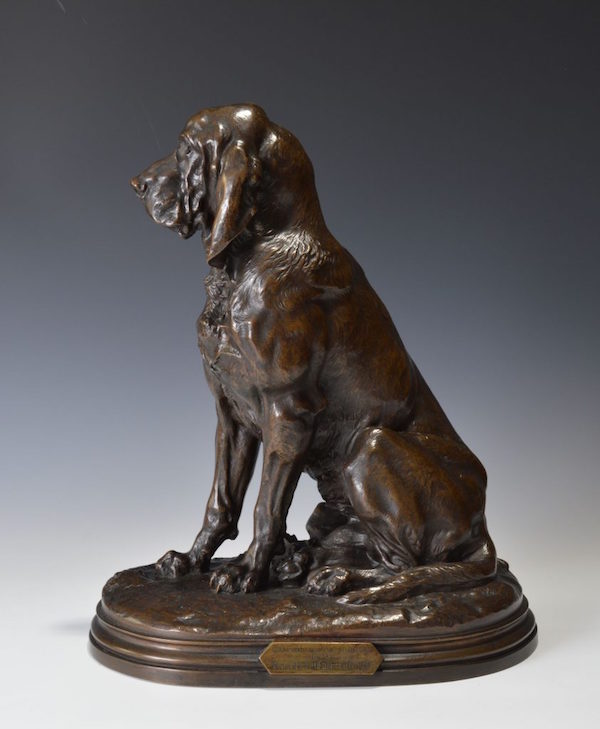
When it comes to canines, history typically associates Napoleon with Pugs and Newfoundland; Pugs, because Josephine’s Pug, “Fortune,” bit Napoleon on their wedding night, and also because Jerome Napoleon Bonaparte, a descendent of Napoleon I, tripped over the leash of his wife’s Pug during a walk in Central Park and broke his neck in 1947.
Newfoundlands, because Napoleon I was saved from drowning by a black and white Newfoundland in 1815 during his escape from exile on the island of Elba; also, because Napoleon’s archenemy, Lord Nelson, kept a Newfoundland beside him in battle, and finally, because the mascot on the frigate HMS Nymph, a Newfoundland, was one of the first of the boarding party to reach the deck of the French warship Cleopatra when she surrendered. Reports say that Napoleon slammed his hand down on the table and muttered. “Dogs! Must I be defeated by them on the battlefield as well as in the bedroom?”
Napoleon’s nephew, Emperor Napoleon III, would bring another breed into the family.
“Old Druid,” born in 1857, was sired by Lord Favershams Raglan out of Baron Rothschilds Fury, and was campaigned in the show ring for several years, eventually becoming the first Bloodhound champion. He was later sold for a hefty sum to Charles Louis Napoleon Bonaparte – Napoleon III – who gave the dog to his son, Prince Eugene Louis Jean Joseph. Photographs of Druid with another famous hound, Cowen’s Druid, and a bitch named, “Countess,” appear in a rare book from 1865 in the British Library, and it may be one of the oldest remaining photographs of a Bloodhound. Druid’s influence in the breed can be traced through Prince Albert Solm’s Druid, Mr. L. G. Morrel’s Margrave, and Edwin Brough’s Napier.
The “original” Napoleon Bonaparte may have had his issues with dogs, but he did once wrote “If you do not like dogs, you do not like fidelity; you do not like those who are attached to you; and, therefore, you are not faithful.”
Image: “Druid,” a bronze by Jules-Bertrand Gelibert (French, 1834 -1916). Brass plaque on the front suggest that this bronze was given as a prize at a dog show in Rouen in 1892.
